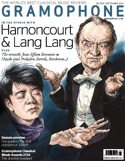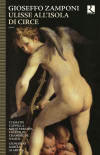Texte paru dans: / Appeared in:
*

GRAMOPHONE (09/2014)
Pour s'abonner /
Subscription information
Ricercar
RIC342

Code-barres / Barcode : 5400439003422 (ID415)
Reviewer:
David
Vickers
During
the 1640s, Giuseppe (or Gioseffo) Zamponi became director of chamber music for
the Spanish governor-general of the Low Countries, and his opera Ulisse
all’isola di Circe (Brussels, 1650) celebrated the marriage of Philip IV of
Spain and Maria Anna of Austria. Engraved illustrations of the sets and costumes
from the original printed libretto are reproduced within three different essays
in Ricercar’s fascinating book. Apparently the extant sources of Zamponi’s music
indicate no rich instrumentations but Leonardo García Alarcón liberally
sprinkles cornetti, recorders, bassoons and trombones – and employs a
kaleidoscopic continuo team – in order to recolour numerous passages in the
score (bassoons when the statues of Circe’s victims sing, etc). Numerous roles
have been transposed to accommodate Alarcón’s chosen voices, and all such
decisions are summarised amiably in producer Jérôme Lejeune’s essay.
Furio Zanasi’s Ulysses has the requisite weariness with hints of cunning
intelligence when he lands on Circe’s mysterious island and wonders why his
advance scouts have disappeared (Act 1 scene 1). Zachary Wilder’s gracefulness
suits the mischievous Mercury disguised as a shepherd; Alarcón adds fidgety high
recorders, just in case we miss that shepherds live in the countryside and play
pipes (scene 3). Low recorders are used to subtler effect in the sinfonia that
introduces Venus (scene 4), whose implacable fury towards Ulysses is
characterised astutely by Mariana Flores. It is plausible that Ulysses finds it
hard to resist Céline Scheen’s beguiling Circe, and their love duet
‘Languisco…Mi moro’ (scene 6) would not be unworthy of Cavalli’s Venetian
operas. On the other hand, the Satyr’s ribald song at the end of Act 1 sounds
like Celtic folk pipers jamming with the Penguin Café Orchestra. Act 3 begins
with a gorgeous string ritornello but halfway through something suspiciously
like a glockenspiel begins to double the top violin part. In the epilogue,
cascades of descending organ lines sound more like 1970s prog rock than early
Baroque opera (I love both, but not necessarily at the same time). The pervasive
levels of interventionism make it impossible to judge Zamponi’s merits securely
but at least the elaborate crew of performers produce plenty of sensual warmth
and drama.
Fermer la fenêtre/Close window
Cliquez l'un ou l'autre
bouton pour découvrir bien d'autres critiques de CD
Click either button for many other reviews


